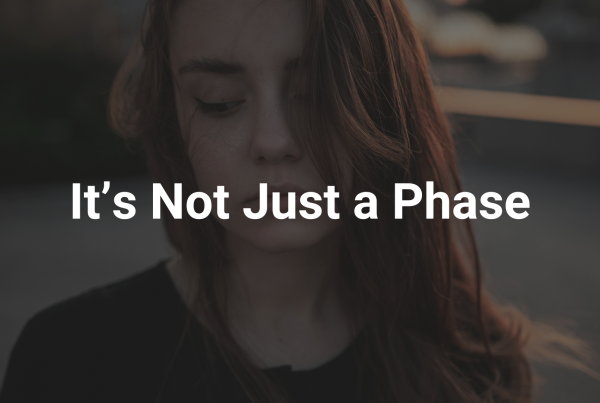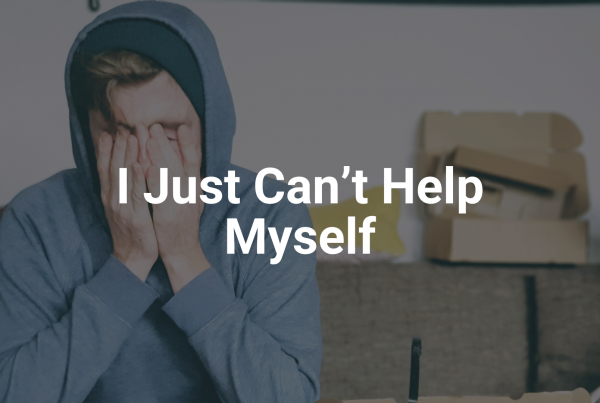Authors: Dr. Abbie Maroño
Published: September 22, 2025
We’ve all felt it—that hot flush of embarrassment, the sinking weight in our chest when we’ve done something we regret. Shame is so uncomfortable that most of us will do anything to avoid it. We bury it, hide it, or distract ourselves from it. But what if shame isn’t something to be feared or ignored? What if shame is actually trying to guide us?
Shame often gets a bad reputation, but it serves a purpose. By understanding what shame is, why we feel it, and how it can help us grow, we can change our relationship with this difficult emotion. Instead of running from it, we can learn to use it as a tool to reconnect with our values, improve our relationships, and strengthen our sense of self.
What is shame, and why do we feel it?
Shame is often confused with guilt, but they’re not the same. Guilt says, “I did something bad,” while shame says, “I am bad.” It strikes at the core of our identity, making it feel like a personal flaw rather than a mistake.
At its root, shame evolved as a survival mechanism. Humans are social creatures—we’ve relied on each other for survival since our earliest days. Cooperation kept us alive, whether it was hunting together, protecting each other, or raising children as a group. When someone broke the rules or threatened the group’s harmony, shame acted as an internal alarm system. It signaled the need to repair relationships, rebuild trust, and reconnect.
Sociologist Thomas J. Scheff describes shame as our “moral gyroscope”—a compass that helps us navigate right and wrong, not just in society but within ourselves. When we act in ways that violate our own values or threaten our relationships, shame is the signal that says, “Something’s off. Make this right.”
Shame doesn’t just exist to make us uncomfortable, it’s part of what keeps us connected. The Harvard Study of Adult Development, the longest-running study on happiness, found that the quality of our relationships is the single biggest predictor of a long, healthy life. Social bonds protect us. They improve our mental and physical health, give us purpose, and help us thrive.
When we act in ways that hurt these connections, by breaking trust, acting selfishly, or withdrawing, shame steps in as a warning. It pushes us to reflect on our behavior, repair broken bonds, and return to the relationships that sustain us.
But shame doesn’t just come from the outside world; it also shows up when we act in ways that conflict with our sense of self. If you pride yourself on being kind but snap at a loved one, shame is there to remind you, “This isn’t who you want to be.” Far from being destructive, this discomfort can guide you back to your values—if you’re willing to face it.
Avoiding Shame
The discomfort of shame is so strong that many of us choose to avoid it altogether. We distract ourselves with work, substances, relationships, or endless scrolling. For some, the avoidance becomes a habit, anything to silence the voice that whispers, “You’ve strayed too far.”
But avoiding shame doesn’t make it disappear. Instead, it grows in the dark. Suppressed shame can lead to feelings of unworthiness, self-destructive behaviors, and disconnection from the people and values that matter most.
Worse still, shame often isolates us. Instead of reaching out for help when we need it, we withdraw to avoid judgment. But isolation only makes shame stronger. Studies show that loneliness is as harmful to health as smoking fifteen cigarettes a day, increasing stress, weakening the immune system, and even shortening lifespan.
Shame as a tool for growth
Here’s the truth: shame isn’t trying to tear you down. It’s trying to point you back to your values. It’s the voice that says, “This isn’t who you are. Let’s get back on track.”
Instead of running from shame, try facing it with curiosity:
- What values or relationships does this shame point to?
- How have my actions strayed from those values?
- What can I do to make amends or move forward?
For example, if you lose your temper with someone you care about, the sting of shame is telling you that kindness matters to you. It’s an opportunity to reflect, apologize, and do better next time.
Shame also invites us to explore our sense of self. Who do you want to be? What values guide you? When you take the time to reflect, you become better equipped to handle shame when it arises. Instead of feeling like an attack, it becomes a guidepost, a reminder of the person you want to grow into.
Shame is not your enemy. It’s a difficult, uncomfortable emotion, but it exists for a reason. It’s there to guide you back to your values, reconnect you to the people who matter, and strengthen your sense of who you are. Instead of hiding from shame, we should learn to sit with it. Reflect on what it’s trying to tell you and share it with someone you trust. But most importantly, don’t let shame convince you that you’re unworthy or broken. Feeling shame means you care. It’s proof that you’re human, that you have values, and that you’re capable of growth.
So the next time shame shows up, take a deep breath. Instead of silencing it, ask yourself: What is this telling me? In facing shame, you’ll find something surprising—not weakness, but strength.
References
De Hooge, I. E., Breugelmans, S. M., & Zeelenberg, M. (2008). Not so ugly after all: when shame acts as a commitment device. Journal of personality and social psychology, 95(4), 933.
de Hooge, I. E., Mohiyeddini, C., Eysenck, M., & Bauer, S. (2013). Moral emotions and prosocial behaviour: It may be time to change our view of shame and guilt. Handbook of psychology of emotions, 2, 255-275.
Gilbert, P. (2003). Evolution, social roles, and the differences in shame and guilt. Social Research: An International Quarterly, 70(4), 1205-1230.
Gülseven, Z., Maiya, S., & Carlo, G. (2022). The Intervening roles of shame and guilt in relations between parenting and prosocial behavior in college students. The Journal of genetic psychology, 183(6), 564-579.
Kinston, W. (1983). A theoretical context for shame. The International Journal of Psycho-Analysis, 64, 213.
Lee, D. A., Scragg, P., & Turner, S. (2001). The role of shame and guilt in traumatic events: A clinical model of shame‐based and guilt‐based PTSD. British journal of medical psychology, 74(4), 451-466.
Li, S., & Wang, L. (2022). The effect of shame on prosocial behavior tendency toward a stranger. BMC psychology, 10(1), 308.
Maroño, A. (2024). Work in Progress: The Road to Empowerment, The Journey Through Shame. Morgan James Publishing.
Tangney, J. P. (1996). Conceptual and methodological issues in the assessment of shame and guilt. Behaviour research and therapy, 34(9), 741-754.
Teroni, F., & Deonna, J. A. (2008). Differentiating shame from guilt. Consciousness and cognition, 17(3), 725-740.





